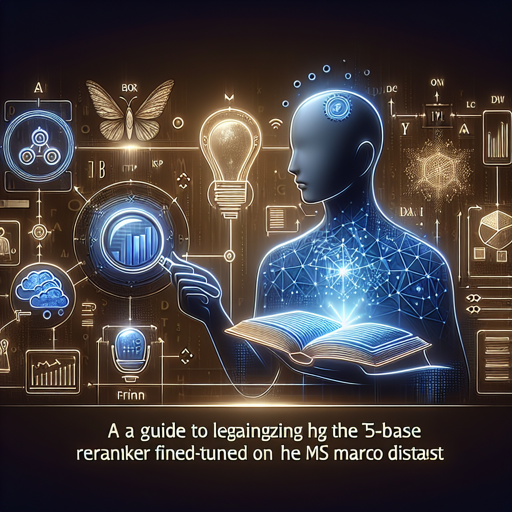With the ever-growing demands of information retrieval technologies, fine-tuned models like the T5-base reranker are crucial for optimizing search results. This blog post provides a user-friendly guide to using this powerful model, explaining its capabilities, how it works, and troubleshooting tips to get you started.
Understanding the T5-Base Reranker
The T5-base reranker is a sophisticated model that has undergone fine-tuning on the MS MARCO passage dataset for 10,000 steps (also known as one epoch). It stands out in its field by showcasing better zero-shot performance compared to the monot5-base-msmarco model, meaning it’s adept at handling datasets that differ from MS MARCO without prior training. Think of it like a skilled translator – it can understand and rephrase ideas not just in its native tongue (MS MARCO) but also in various other languages (datasets).
Getting Started
To effectively utilize the T5-base reranker model, follow these simple steps:
- Prerequisite: Ensure you have Python and the necessary libraries installed.
- Clone the Repository: Download the relevant code from the repository by executing:
git clone https://github.com/castorini/pygaggle - Install Required Packages: Navigate to the repository directory and install dependencies:
pip install -r requirements.txt - Follow Examples: Check out these links to familiarize yourself with the reranking process:
How It Works: The Analogy
To further grasp how the T5-base reranker operates, let’s liken it to a restaurant review system. Imagine you have a menu of restaurants (datasets). You’ve previously dined at the restaurant you know best (MS MARCO). However, when you visit a new city (or dataset), the T5-base reranker acts like an expert food critic. It takes the reviews it learned from the original restaurant and applies that knowledge to rate and recommend dishes from unfamiliar restaurants, ensuring you get the best dining experience regardless of where you are.
Troubleshooting Tips
While implementing the T5-base reranker, you might encounter a few bumps along the way. Here are some troubleshooting ideas to help you navigate through them:
- Incompatible Libraries: Make sure all your packages are up-to-date and compatible with one another.
- Model Performance Issues: If the model isn’t performing as expected, ensure you have fine-tuned it adequately on the dataset in question.
- Resource Constraints: If running the model is causing memory issues, try it on a smaller subset of your data or increase your machine resources.
For more insights, updates, or to collaborate on AI development projects, stay connected with fxis.ai.
Conclusion
By following this guide, you should be well on your way to successfully implementing the T5-base reranker for efficient information retrieval. At fxis.ai, we believe that such advancements are crucial for the future of AI, as they enable more comprehensive and effective solutions. Our team is continually exploring new methodologies to push the envelope in artificial intelligence, ensuring that our clients benefit from the latest technological innovations.

